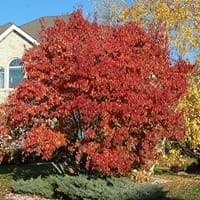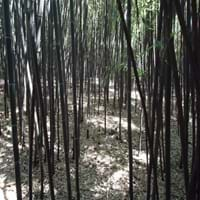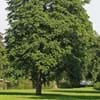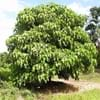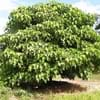Life Span
Perennial
Perennial
Origin
Eastern Europe, Western Asia
Southeastern Asia
Types
Not available
Clumping bamboo, Running bamboo, Umbrella bamboo
Number of Varieties
Not Available
Habitat
disturbed sites, Forest edges, gardens, Open Forest, Roadsides, Swamps, Urban areas
Subtropical climates, Tropical regions
USDA Hardiness Zone
3-7
9-15
Sunset Zone
1a, 1b, 2a, 2b, 3a, 3b, 4, 5, 6, 7, 8, 9, 14
H1, H2, 18, 19, 20, 21, 22, 23, 24
Habit
Oval or Rounded
Clump-Forming
Minimum Width
Not Available
Flower Color
Light Green, Ivory
Yellow green
Flower Color Modifier
Bicolor
Bicolor
Fruit Color
Red, Crimson
Non Fruiting Plant
Leaf Color in Spring
Green
Green
Leaf Color in Summer
Green
Light Green
Leaf Color in Fall
Yellow, Red, Orange, Gold, Crimson
Green
Leaf Color in Winter
Not Available
Green
Leaf Shape
Lobed
Lance shaped
Plant Season
Spring, Summer, Fall
Spring, Summer, Fall, Winter
Sunlight
Full Sun, Partial Sun
Full Sun, Partial Sun
Growth Rate
Medium
Very Fast
Type of Soil
Loam
Loam, Sand
The pH of Soil
Acidic, Neutral, Alkaline
Acidic, Neutral, Alkaline
Soil Drainage
Well drained
Average
Bloom Time
Early Spring, Spring
Not Available
Tolerances
Drought, Pollution, Salt, Shade areas, Soil Compaction
Cold climate, Drought, Salt
Where to Plant?
Ground
Ground
How to Plant?
Layering, Leaf Cutting, Seedlings, Stem Cutting
Stem Planting
Plant Maintenance
Low
Medium
Watering Requirements
Keep ground moist, Medium, Requires consistently moist soil
Requires regular watering, Water more in summer
In Summer
Lots of watering
Lots of watering
In Spring
Moderate
Moderate
In Winter
Keep Slightly Dry
Average Water
Soil pH
Acidic, Neutral, Alkaline
Acidic, Neutral, Alkaline
Soil Type
Loam
Loam, Sand
Soil Drainage Capacity
Well drained
Average
Sun Exposure
Full Sun, Partial Sun
Full Sun, Partial Sun
Pruning
Pruning in early stages, Remove damaged leaves, Remove dead branches, Remove dead leaves
No need to prune, Remove damaged leaves, Remove dead branches, Remove dead leaves
Fertilizers
All-Purpose Liquid Fertilizer, Bonsai
All-Purpose Liquid Fertilizer
Pests and Diseases
Aphids, Borers, Honey fungus, Red blotch, Soft scales
Aphids, Insects, Red blotch
Plant Tolerance
Drought, Pollution, Salt, Shade areas, Soil Compaction
Cold climate, Drought, Salt
Flower Petal Number
Not Available
Single
Foliage Texture
Medium
Fine
Foliage Sheen
Glossy
Matte
Attracts
Deers, Not Available, Rabbits, Squirrels
Aphids, Insects
Allergy
Not Available
no allergic reactions
Aesthetic Uses
Beautification, Cottage Garden, Showy Purposes
Beautification, Showy Purposes
Beauty Benefits
Not Available
No Beauty Benefits
Environmental Uses
Agroforestry, Wildlife, Windbreak
Air purification
Medicinal Uses
Astringent
No Medicinal Use
Part of Plant Used
Fruits, Leaves
Stem, Tree trunks
Other Uses
As a tea substitute, Florist trade and landscaping, Food for animals, Showy Purposes
Air freshner, Decoration Purposes
Used As Indoor Plant
No
Yes
Used As Outdoor Plant
Yes
Yes
Garden Design
Feature Plant, Foundation, Hedges, Mixed Border, Screening / Wind Break, Street Trees
Feature Plant, Tropical
Botanical Name
Acer ginnala
BAMBUSA lako
Common Name
Amur Maple
Black Timber Bamboo, Clumping Bamboo, Timor Black Bamboo
In Hindi
अमुर मेपल
तिमोर काला बांस
In German
Amur-Ahorn
Timor-schwarzer Bambus
In French
érable de l'Amour
Timor bambou noir
In Spanish
arce de Amur
Timor Negro de bambú
In Greek
Amur Maple
Τιμόρ Μαύρο μπαμπού
In Portuguese
de bordo amur
Timor Black Bamboo
In Polish
klon amur
Timor Czarny Bambus
In Latin
amur acernis
Timor Niger Bamboo
Phylum
Magnoliophyta
Magnoliophyta
Class
Magnoliopsida
Liliopsida
Clade
Angiosperms, Eudicots, Rosids
Angiosperms, Commelinids, Monocots
Tribe
Not Available
Poaceae
Subfamily
Hippocastanoideae
Barnadesioideae
Season and Care of Amur Maple and Timor Black Bamboo
Season and care of Amur Maple and Timor Black Bamboo is important to know. While considering everything about Amur Maple and Timor Black Bamboo Care, growing season is an essential factor. Amur Maple season is Spring, Summer and Fall and Timor Black Bamboo season is Spring, Summer and Fall. The type of soil for Amur Maple is Loam and for Timor Black Bamboo is Loam, Sand while the PH of soil for Amur Maple is Acidic, Neutral, Alkaline and for Timor Black Bamboo is Acidic, Neutral, Alkaline.
Amur Maple and Timor Black Bamboo Physical Information
Amur Maple and Timor Black Bamboo physical information is very important for comparison. Amur Maple height is 460.00 cm and width 300.00 cm whereas Timor Black Bamboo height is 1,520.00 cm and width Not Available. The color specification of Amur Maple and Timor Black Bamboo are as follows:
Amur Maple flower color: Light Green and Ivory
Amur Maple leaf color: Green
Timor Black Bamboo flower color: Yellow green
- Timor Black Bamboo leaf color: Green
Care of Amur Maple and Timor Black Bamboo
Care of Amur Maple and Timor Black Bamboo include pruning, fertilizers, watering etc. Amur Maple pruning is done Pruning in early stages, Remove damaged leaves, Remove dead branches and Remove dead leaves and Timor Black Bamboo pruning is done No need to prune, Remove damaged leaves, Remove dead branches and Remove dead leaves. In summer Amur Maple needs Lots of watering and in winter, it needs Keep Slightly Dry. Whereas, in summer Timor Black Bamboo needs Lots of watering and in winter, it needs Average Water.
